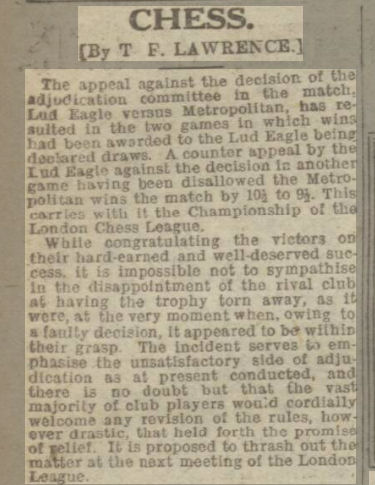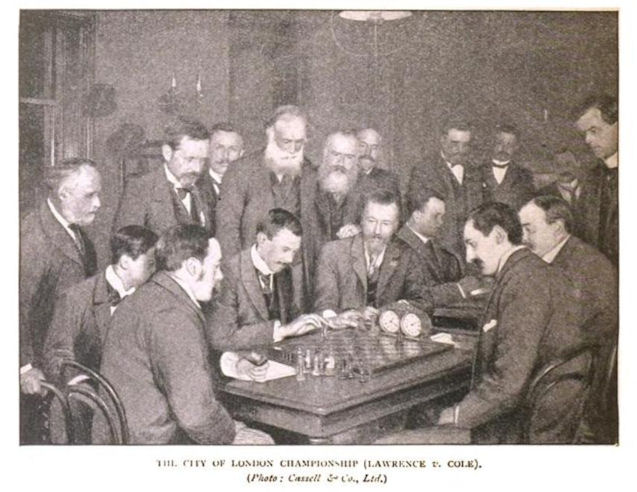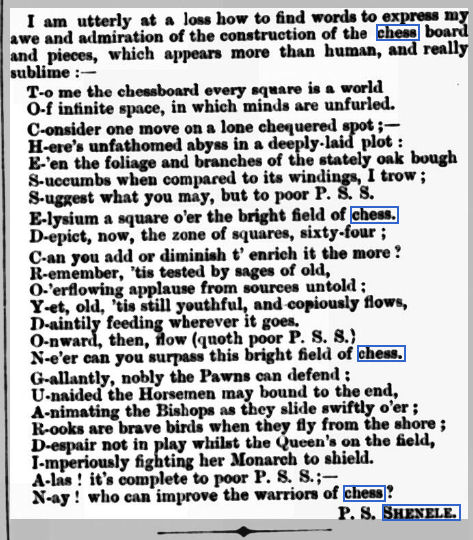
Here is the publishers blurb from the rear cover :
“Every chess player, from club level up, can improve their game by using engines. That is the message of Matthew Sadler’s thought-provoking new book, based on many years of experience with the world’s best chess software.
You may not be able to replicate their dazzling-deep calculations, but there is so much more your engine can do for you than just checking variations! Matthew Sadler, co-author of the ground-breaking bestseller Game Changer, presents some unique methods to improve by using your engine. He explains how in your opening preparation, instead of sifting through masses of computer analysis you should play training games against your engine. He also shows how to train your early middlegame play, the conversion of advantages, your positional play, and your defensive skills. And, of course: how to analyse your own games.
These generic training methods Sadler supplements with concrete techniques. He explains how the top engines tackle crucial middlegame themes such as entrenched pieces, whole board play, ‘attacking rhythm’, exchanging pieces, the march of the Rook’s pawn, queen versus pieces, and many others. He also opens your eyes to typical strategies that the engines found and fine-tuned in popular openings such as the King’s Indian, the Grünfeld, the Slav, the French and the Sicilian. Sadler illustrates his lessons with a collection of fantastic games, explained with his trademark enthusiasm. For the first time, the superhuman powers of the chess engine have been decoded to the benefit of all players, in a rich and highly instructive book.”
About the author :
Matthew Sadler (1974) is a Grandmaster and a former British Champion. He has been writing the famous ‘Sadler on Books’ column for New In Chess magazine for many years. With his co-author Natasha Regan, Sadler twice won the prestigious English Chess Federation Book of the Year Award. In 2016 for ‘Chess for Life’ and in 2019 for their worldwide bestseller Game Changer: AlphaZero’s Ground-breaking Chess Strategies and the Promise of AI.

This is the latest book by acclaimed author and 2 time British Champion Matthew Sadler. His previous book Game Changer: AlphaZero’s Groundbreaking Chess Strategies and the Promise of AI (co-authored with Natasha Reagan) won both the 2019 ECF Book of the Year and FIDE Book of the Year. Following the publication of Game Changer the authors gave many talks around the country about Alpha Zero. They were frequently asked the same two questions “what could be learnt from AlphaZero’s games and were they too advanced for us mere mortals?” This book sets out to show that there is a considerable amount that can be learnt from these computer engine games as well as discovering many new ideas that can be extracted and applied in one’s own games. The author also sets out to demonstrate that every chess player from Club level upwards can improve with the help of chess engines as the engines can do much more than just calculate variations. Chess engines can be used to enhance opening preparation and to improve your skills in the middlegame. This book can be thought of as a sequel to Game Changer but it can also be read independently as it showcases the games played by all the top computer engines rather than focusing on the radical changes brought about by AlphaZero.
The book is split into two parts. The first part provides an overview of todays top chess engines and the associated training methods recommended by the author. This covers the methods that the author has employed as a professional player as well as some new and innovative ways to using chess engines. Part 2 contains the meat of the book, 18 chapters & 484 pages analysing a wide range of opening and middlegame themes. To assist the reader, there is also some supporting Supplementary Material available to download. This includes a PGN file containing all the games included in the book together with instructions on how to set up and configure the chess engines. Having downloaded everything I found the instructions easy to follow and anyone with a moderate level of IT skills should to be able to do the same. The author has also recently created a YouTube channel: SiliconRoadChess which contains over 250 videos showing how to use chess engines and showcasing the best engine games. As well as covering topics such as Engine Openings (92 Videos) and Great Engine Games (74 videos) there are many other interesting videos to watch from TCEC events and analysis of some of the games from the recent Carlsen Nepomniachtchi match. As well as the videos there is also a PGN database available providing additional material for the channel. Currently there are over 2.21 K subscribers to Silicon Road but I am sure that this number will increase. After watching a few of these videos it is clear that Matthew’s has a passion and enthusiasm for engine chess and I shall be watching many more of these in the weeks to come.
The first two chapters in part 1 are an introduction into the world of computer chess and the Top Chess Engine Competition (TCEC) which is the source for most of the games in this book, the remainder were generated by the author himself. We are introduced to the top engines (our heroes) together with a description of their playing styles, strengths, weaknesses and associated technical notes.
In chapter 3 the author lays out the methods that he has used himself to study with chess engines during his career along with a couple of new and innovative approaches. These are as follows:
- Playing Rapid Games – Good for opening and early middlegame play.
- Playing against Leela Zero restricted to a one-node search. – Good for openings, positional play and conversion of winning positions.
- Playing out positions with a rapid time control. – Good for conversion of advantages and developing defensive skills
- Playing ‘correspondence chess’ against your engine. – Good for developing analytical skills and conversion of advantages.
- Running engine matches from key opening positions. – Good for developing a feel for openings and related middlegames.
- Letting your engines analyse an opening position for X hours (deep analysis). – Good for analysing a single position in great depth.
- Periodic checking of your analysis against a live engine – Develops a real-time insight into a position
Like most players I have used computer engines in the past for analysing my own games and as a sparring partner, mainly using Fritz on only the lower handicap levels. Up until now I have not used the methods described above apart from the first and the last one. So I decided to try out a couple of other methods for myself. I began with method 5, playing engine matches from key positions and get an overview of specific openings. I won’t go into too much detail here as it would give away how the author has used this method but I tried out the approach on two types of openings. Firstly I used it on some lesser known gambits. The rationale being that firstly I have never played these openings and that they are difficult to learn. Not only are there are a many variations to memorise but also there are a lot of critical positions to evaluate. Secondly I chose selection of positional openings to see how the engines would get on. I used a number of different engines (Stockfish 15, Deep Fritz 13, Fat Fritz & Leela v22) running on an i5 Laptop and a time control of M20 + 5 second increments. The matches were set up to play 6 games in each opening. (I did run a number of matches with Blitz time controls but the results were not as good) Running these matches with Cloud Engines or longer time controls would of course produce better quality games. I chose the following three gambits:
- The Henning-Schara Gambit (1 d4 d5, 2 c4 e6, 3 Nc3 c5. 4 cd cd )
- The Marshall Gambit in the Semi Slav (1 d4 d5, 2 c4 c6 3 Nc3 e6 4 e4)
- The Portsmouth Gambit (1e4 c5 2 Nf3 Nc6 3 b4)
And for the ‘positional’ openings I used:
- The Ruy Lopez Exchange Variation and the Berlin Defence
- Queens Gambit Accepted and Exchange variations.
- Italian Game with c3 & d3
The Ruy Lopez Berlin Defence (aka Berlin Wall) has proved to be a very efficient drawing weapon since it was made ‘popular’ by Vladimir Kramnik back in 2000. It is also an opening that engines consider as best play with both colours. (For a more detailed explanation see: Engine Openings Understanding the Ruy Lopez Berlin which also includes the author demonstrating how to take on Leela Zero in the 1-node mode described above.) Once all the engine matches were completed I was pleasantly surprised to find out how much I learnt by just by playing through the engine games. This approach will not make you an instant expert and would only be a prelude to more detailed study but it will be something that I will definitely use in the future. I will also use this approach in conjunction with method 6 to examine some of the critical positions in more detail. I have not included the results of the matches are they are not important as I was not trying to determine which engine was the strongest but only interested in the games that the engines produced.
To give you some idea of the quality of the games here is an example game from the Portsmouth Gambit match played between Stockfish 15 and Leela 0 v22.
Stockfish 15 – Lc0 v0.22.0 cpu [B30] Rapid 20.0min+5.0sec
1.e4 c5 2.Nf3 Nc6 3.b4 Nxb4 4.c3 Nc6 5.d4 cxd4 6.cxd4 e6 7.Nc3 Bb4 8.Bd2 d5 9.e5 Nge7 10.Bd3 Qa5 11.Rc1 Bd7 12.0-0 h6 13.Nb5 0-0

14.Bxh6 gxh6 15.a3 Bxa3 16.Ra1 f5 17.Rxa3 Qb6 18.Rb3 Na5 19.Rb1 Bxb5 20.Rxb5 Qc7 21.Qd2 Nec6 22.Qxh6 Rae8 23.g4 Qg7 24.Qxg7+ Kxg7 25.gxf5 exf5 26.Rd1 a6 27.Rxd5 Rd8 28.Rxd8 Rxd8 29.Bxf5 Nc4 30.Ng5 Nxd4 31.Rxd4 Rxd4 32.Ne6+ Kh6 33.Nxd4 Na5 34.f4 1-0
A fascinating combination beginning with the bishop sacrifice on h6 immediately followed by pawn sacrifice on a3 then finally 21 Qd2 with a double attack on h6 & a5. There is a whole chapter in the book devoted to the concept of whole board play and this game is an excellent demonstration of this theme.
I also tried out method 2, playing some games against Leela Zero in 1-Node mode. This approach restricts Leela Zero to a single node (looking one move ahead) instead of the usual millions of nodes per move. Leela Zero is so good that its first choice move is usually good enough for high level of play. Also, when playing in 1-node mode the engine moves are made instantly. The only weakness that I found with this approach was that is that the engine does not see any tactics. However this is a blessing in disguise as it replicates ‘human’ play as the engine plays a series of good moves followed by the occasional blunder. Having played a number of games against Leela Zero in this mode I can see the benefits of using this approach. I was really impressed with the quality of play considering the engine is only looking one move ahead. You can try playing against Fritz in one of the ‘handicap’ modes and get similar results but the Leela Zero engine and Nibbler GUI are both available as free open source alternatives.
Part 2 is devoted to the author’s research into chess engine games. This covers the identification of the recurring middlegame themes and highlighting the exceptional games that contain these ideas. Sixteen different themes are covered. The games in this section have been analysed very deeply and the author explains his approach which is as follows:
- An initial analysis of each game without any engine assistance.
- Checking the analysis with live engine help
- Identifying interesting points in the game to be investigated further (typically between 10 -15)
- Run an engine match on all the positions of interest (anything from 40 -120 games)
- Pick out the key games and add to the original analysis
- Iterate until all above questions have been resolved
- Distil and summarise all the above information into the game annotations
Also at the beginning of Part 2 there is a chapter covering the typical opening scenarios covered in the book from the following openings: Kings Indian Defence, Grunfeld, Slav & Semi Slav, English and the French Defence.
One chapter is devoted to a specific middlegame theme and each theme is discussed with a selection of annotated engine games followed by a deeply annotated illustrative game. The analysis of these illustrative games is incredibly deep and several run to over 20 pages! Amongst the topics covered here are exchanging active pieces to leave the opponent with passive ones, the march of the rooks pawn (one of the major discoveries from Alpha Zeros games), Engine Sacrifices, Whole Board Play and the Kings Indian Opposite Wing Pawn Storm. The final chapter discusses how best to apply the themes in your own games. The author also describes one of the most memorable moment in his chess career was when he first had an opportunity to play through hundreds of AlphaZero Stockfish games. Specifically the number of high quality games that were produced. He thought that this was more memorable than any of his OTB achievements (which included winning the British championship and representing England in the Olympiads).
This has been a fascinating book to review. Previously I had not paid a great deal of attention to computer chess in the past, either because I didn’t think it was relevant to OTB play or the games were far too difficult to understand. The author clearly has a very deep understanding of computer chess and has done a tremendous amount of research analysing engine games, identifying and classifying the recurring patterns contained therein, then showing how this knowledge can be applied taken to your own games. As well as reading the book I took the opportunity to watch many of the videos on the associated YouTube channel. The majority of which have been produced since the book was first published in 2021. No doubt many more videos produced in the future. Although this is a large book (560 pages) it is not ‘heavy’ book to read. Some of the topics in part 2 are very complex but the author explains them all in a clear and concise manner. The more that I find out about this subject the more interesting it becomes. So if you have ever wanted to find out more about the fascinating world of computer chess and how to use the engines to improve your own game then this is a good place to start. I highly recommend buying this book.
Tony Williams, Newport, Isle of Wight, 21st September 2022

Book Details :
- Paperback : 560 pages
- Publisher:New In chess (31 December 2021)
- Language: English
- ISBN-10:9056919830
- ISBN-13:978-9056919832
- Product Dimensions: 17.17 x 2.11 x 23.67 cm
Official web site of Everyman Chess







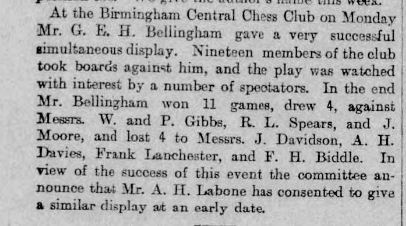









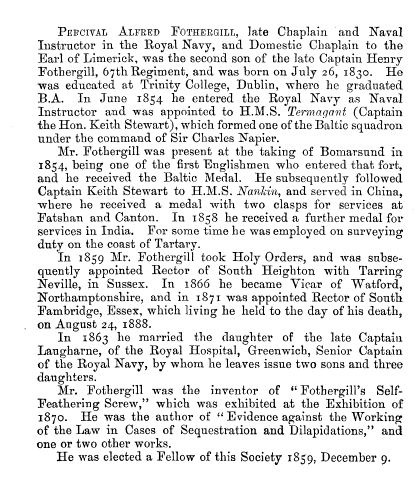




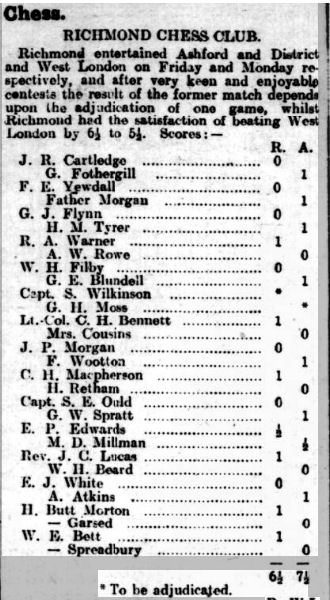



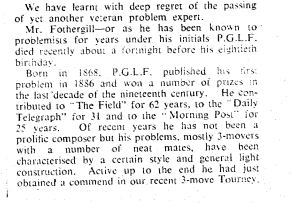
 Unfortunately the accompanying photograph didn’t reproduce well.
Unfortunately the accompanying photograph didn’t reproduce well.












